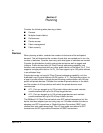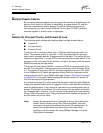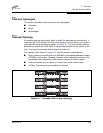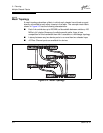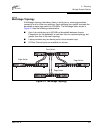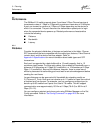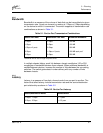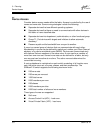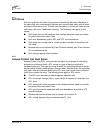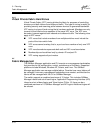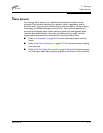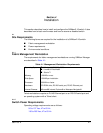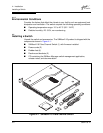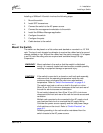
3 – Planning
Device Access
3-8 59021-05 A
3.4
Device Access
Consider device access needs within the fabric. Access is controlled by the use of
zones and zone sets. Some zoning strategies include the following:
■ Separate devices that use different operating systems.
■ Separate devices that have no need to communicate with other devices in
the fabric or have classified data.
■ Separate devices into department, administrative, or other functional group.
■ Group TL_Port devices with targets and initiators to allow automatic
discovery.
■ Reserve a path and its bandwidth from one port to another.
A zone is a named group of devices that can communicate with each other.
Membership in a zone can be defined by switch port number, port Fibre Channel
address, or by device worldwide name (WWN). Devices can communicate only
with devices that are members of the same zone. A zone can be a member of
more than one zone set. Several zone sets can be defined for a fabric, but only
one zone set can be active at one time. The active zone set determines the
current fabric zoning.
A zoning database is maintained on each switch consisting of all inactive zone
sets, the active zone set, all zones, aliases, and their membership. The
SANbox2-16 switch supports the following maximum limits:
■ 256 zone sets
■ 256 zones per zone set
■ 1000 total zones
■ 2000 members per zone
■ 256 aliases
■ 2000 members per alias
■ 2000 total number of alias and zone members
Three types of zones are supported:
■ Soft zone
■ Access Control List (ACL) - hard zone
■ Virtual Private Fabric (VPF) - hard zone




